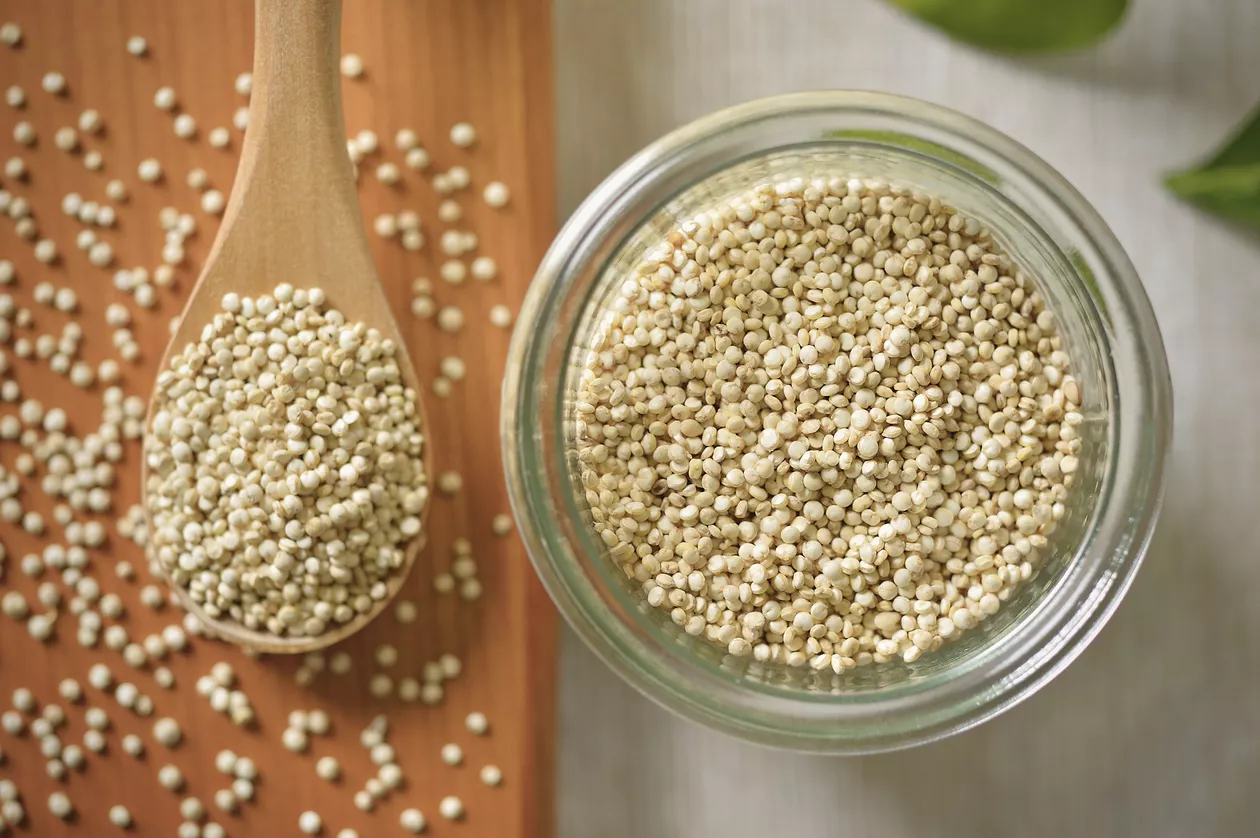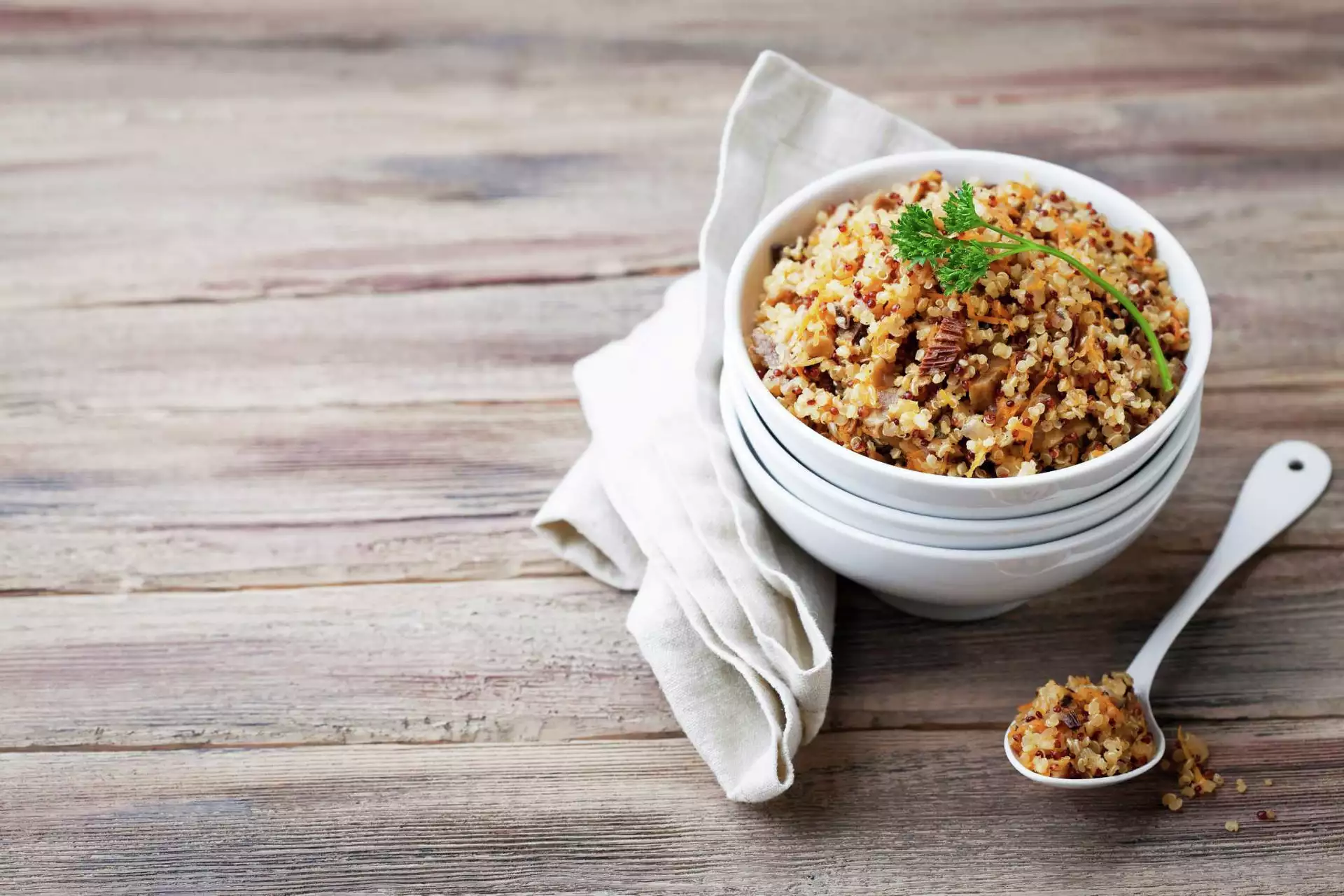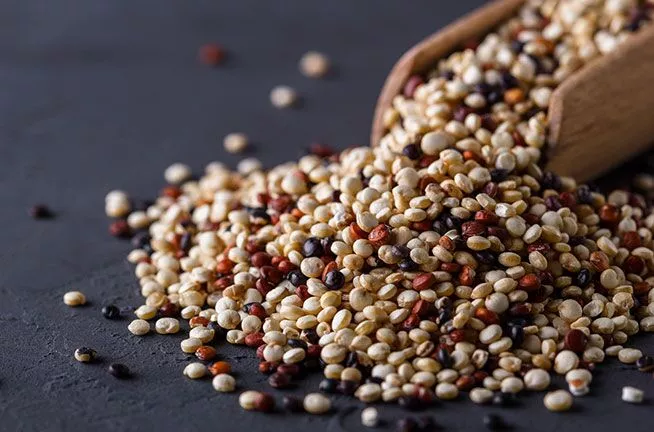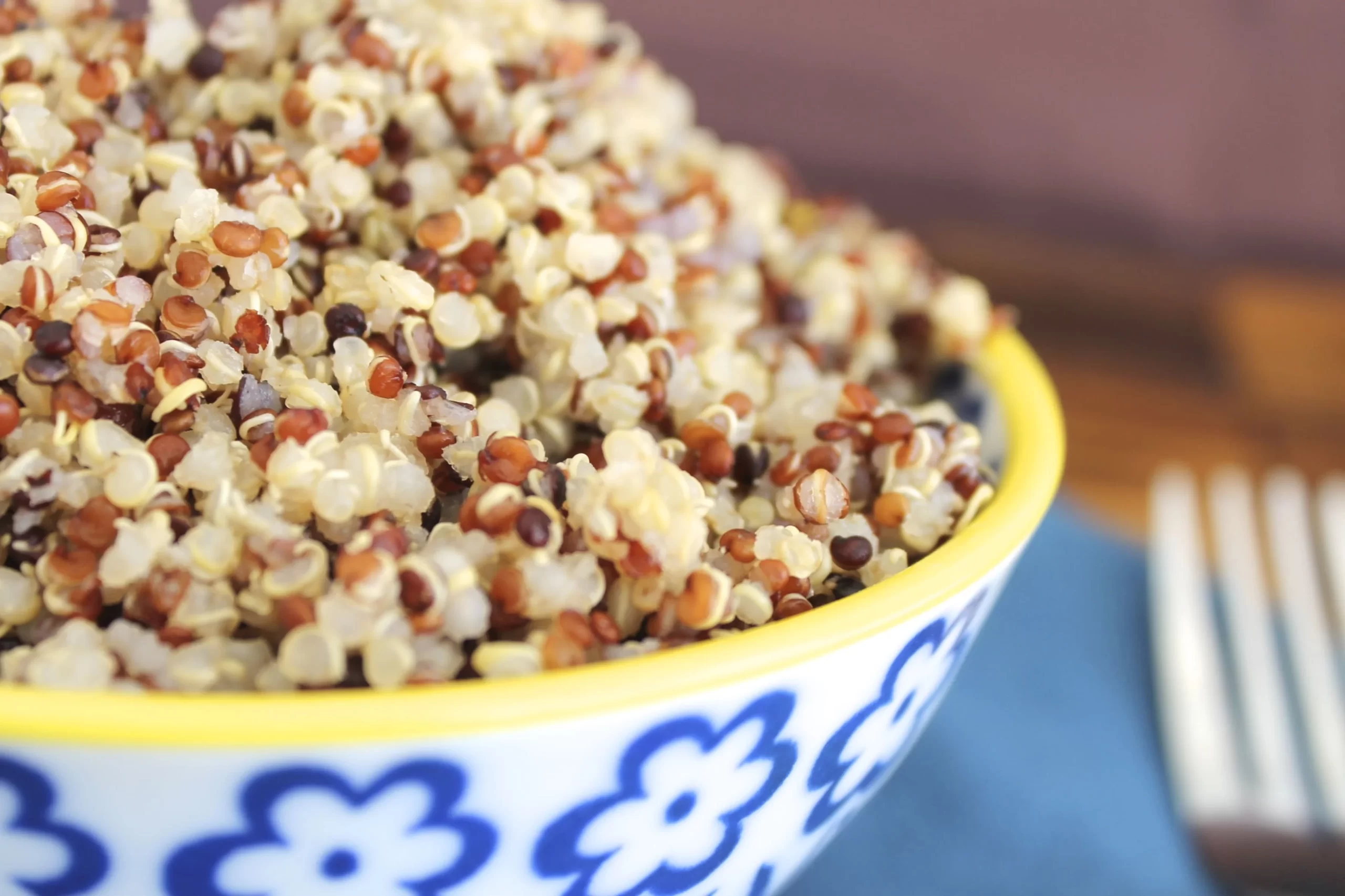The popularity of quinoa as a nutritious food source has risen rapidly in recent years. This ancient grain is high in protein and other minerals. While most people prefer to boil their quinoa before eating it, some may be curious about whether or not it is safe to consume raw. Let’s weigh the benefits and drawbacks of eating raw quinoa, as well as some helpful hints.

What Does Quinoa Taste Like?
Raw quinoa has an extremely bitter, soapy smell due to saponins on the outer covering of the seeds. Raw quinoa has a taste that most people find unpleasant.
Cooked quinoa has a moderately nutty flavor and a somewhat chewy texture. Its flavor complements a variety of meals, making it a versatile component in both savory and sweet cuisines.
What is Quinoa Good For?
Adding quinoa to your diet can greatly improve your health due to its highly enriched nutritional profile.
- Potential anti-cancer properties.
- Potential for inflammation reduction.
- Assists in maintaining healthy blood sugar levels.
- May promote healthy digestion.
- Potentially reduces cholesterol levels.
- Is appropriate for individuals with celiac disease.
- Potentially helps prevent anemia.
Nutritional Profile of Raw vs Cooked
- Raw quinoa has more antioxidants, protein, fiber, and minerals.
- When undercooked, enzyme inhibitors hinder digestion.
- Cooked quinoa contains fewer antinutrients and is more easily digested.
- Either form contains full protein, including all essential amino acids.
Can You Eat Raw Quinoa?
Quinoa can be eaten fresh or uncooked if it has been soaked and sprouted, but some experts recommend cooking quinoa rather than eating it raw. If you want to avoid stomach problems, don’t eat quinoa that is still raw.

Can You Eat Quinoa Without Rinsing It?
Since quinoa has a natural wax coating called saponin, it is strongly advised to rinse it before cooking. This soapy film has an extremely unpleasant aftertaste if not removed.
Even though some brands might have already rinsed it, it is always preferable to give it a quick rinse in a fine mesh strainer under running water.
Even sprouted quinoa should be rinsed since saponins from the outer hull may persist after sprouting. Rinsing ensures that any remaining bitter substances are washed away.
How to Safely Sprout Raw Quinoa?
Ever heard of sprouted quinoa? While it does require some preparation, sprouting fresh quinoa increases its nutrients by 600%! For a risk-free attempt at home:
- 1/4 cup of quinoa should be thoroughly rinsed before soaking for 8–12 hours.
- Drain and rinse 2-3 times per day.
- Sprouts with tails appear in 2–5 days.
- Sprouts should be refrigerated and eaten within a week.
- Include sprouts in trail mix, smoothies, and salads.
- Make advantage of sprouts before roots or mold form.
How do I Cook Quinoa?
Most people cook quinoa because it softens the rawness. It boils up easily. After rinsing, place 1 cup quinoa and 2 cups liquid in a pot and bring to a boil. Reduce the heat to low, cover, and cook for 15 minutes, or until the quinoa has absorbed the liquid and the germ has separated from the seed. Before serving, fluff the rice with a fork.
When the grains have finished brewing, they will be plump and curled. Cooking also brings out the flavor and minerals in quinoa more than eating it fresh. While you can eat it raw, many people say the texture and flavor aren’t as good.
How Do You Eat Quinoa?
Here are some uncooked quinoa recipes:
- Toss raw quinoa with salads, yogurt, porridge, or cereal. Quinoa provides added crunch and minerals.
- To add a healthy crunch to sandwiches, wraps, sushi rolls, and tacos, make quinoa sprouts.
- To make smoothies, protein shakes, chia puddings, energy bites, and no-bake desserts, combine soaked quinoa with fruits and liquids.
- To make homemade granola bars and snack bars, bake sliced nuts, seeds, and raw quinoa.

Top Tips for Preparing Perfect Quinoa
Here are some tips for preparing perfect quinoa every time, perfect for home cooks:
- To remove saponins, thoroughly rinse it before cooking.
- Use a 1:2 ratio of quinoa to liquid (1 cup quinoa to 2 cups water or broth)
- Bring the stock to a boil before adding the quinoa.
- Cover and simmer on low heat for 12–15 minutes, or until the onion is transparent.
- Fluff with a fork and remember to remove it from the heat!
- Add flavor and nutrients by cooking with vegetable or chicken broth.
- Quinoa also freezes well for meal preparation; simply defrost as needed.
10 Tasty Quinoa Recipes to Try
Are you ready to start eating quinoa? Try these delectable recipes:
- Quinoa for breakfast with almonds, berries, and maple syrup
- Salad of curried quinoa with raisins, cabbage, and curry dressing
- Tabbouleh of quinoa with tomatoes, parsley, mint, and lemon
- Quinoa veggie burgers with roasted veggies and black beans
- Quinoa enchiladas (quinoa, black beans, salsa, and avocado)
- Quinoa pizza crust (quinoa flour)
- Quinoa flour chocolate cookies or blondies
- Quinoa energy bars or balls with dates, almonds, cinnamon, and chocolate
- Quinoa chia pudding made with almond milk and fresh fruit
- Stuffed quinoa peppers or zucchini boats

Conclusion
Overall, quinoa can be eaten raw, but cooking enhances both its flavor and texture. Cooking softens any bitterness, allowing for greater enjoyment. Quinoa adds nourishment to any diet, whether sautéed into dishes, cooked as a cereal, or lightly sprouted. So go ahead and make a pot when you’re wanting its advantages!
FAQs
Can you eat raw quinoa? Eating raw quinoa is not recommended, as it may cause digestive discomfort. I recommend cooking quinoa as directed below, although you may want to experiment with how to make puffed quinoa.
If you have a powerful blender, you can blend raw, uncooked quinoa into a smoothie. It makes a high protein, high fiber breakfast or meal replacement any time of the day.
The digestibility yield of cooked and uncooked quinoa was 69.04% and 64.09%, respectively, and the digestibility of cooked quinoa was higher than that of uncooked quinoa.
Cook until water is completely absorbed and quinoa is tender—about 12–18 minutes. Drain off any excess water, if there is any. I like to turn off the heat and remove the lid for 10 minutes, so the quinoa gets fluffier. Then return the lid to keep warm until serving.
Can you eat raw quinoa? Eating raw quinoa is not recommended as it may cause digestive discomfort. I recommend cooking quinoa as directed below, although you may want to experiment with how to make puffed quinoa.
Keep in mind that you always want to cook your quinoa first. The seeds are hard, and while you can sprout them and eat them raw, it’s an acquired taste, because raw quinoa can sometimes be bitter in flavor.
Sources:
- How to Cook Quinoa
- Can You Eat Quinoa Raw or Uncooked
- Can You Eat Quinoa Raw or Uncooked?
- 10 Unexpected Ways to Enjoy Quinoa
- All About Quinoa: What Is It And How To Cook It
- Learn About Quinoa
- This Is Really What Happens If You Don’t Rinse Quinoa
- How to Cook Fluffy Quinoa
- How to Cook Perfect Quinoa & 10 Quinoa Recipes
- How to Sprout Quinoa (Quick and Easy)
- How to cook Quinoa (and what to do with it!)
- Can you eat raw quinoa? (5 useful tips)
- Does Quinoa Go Bad? How Long Does it Last?
- Quinoa Health Tips – Great Quinoa Recipes
- How Long Does Quinoa Last? (Uncooked and Cooked)
- raw quinoa quandary
- How to Fix Undercooked Quinoa
- Sprouted Quinoa: The Mother Grain
- Can You Eat Raw Quinoa Grain?
- How To Cook Quinoa